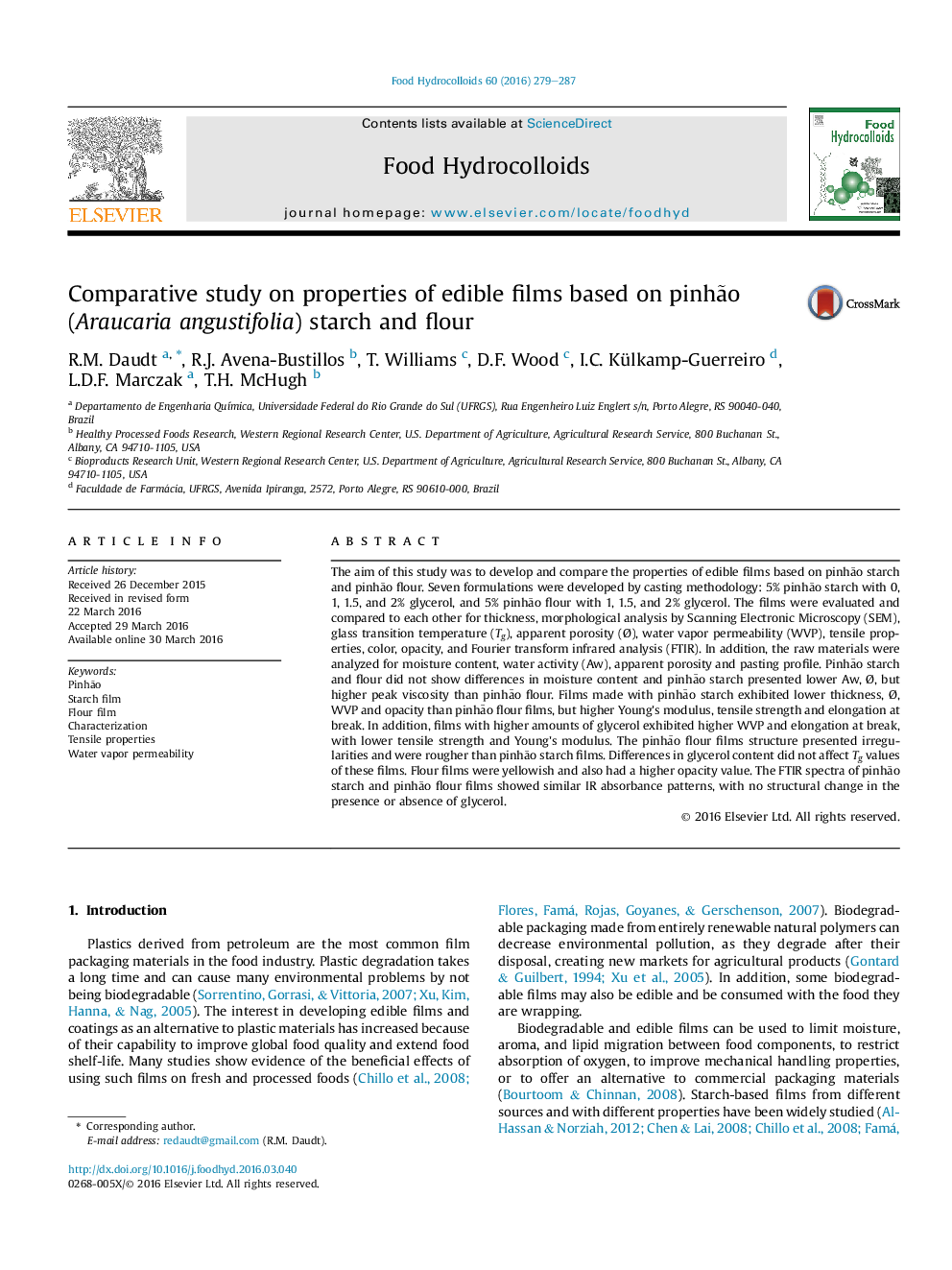| Article ID | Journal | Published Year | Pages | File Type |
|---|---|---|---|---|
| 603578 | Food Hydrocolloids | 2016 | 9 Pages |
•Pinhão starch and flour were characterized and used as base for edible films.•The films were developed by casting methodology and varying the glycerol amount.•Starch films showed lower thickness, WVP and opacity, with higher tensile properties.•Higher glycerol amounts increased WVP and elongation, and decreased tensile strength.•Pinhão starch and flour constitute a good alternative source for edible films base.
The aim of this study was to develop and compare the properties of edible films based on pinhão starch and pinhão flour. Seven formulations were developed by casting methodology: 5% pinhão starch with 0, 1, 1.5, and 2% glycerol, and 5% pinhão flour with 1, 1.5, and 2% glycerol. The films were evaluated and compared to each other for thickness, morphological analysis by Scanning Electronic Microscopy (SEM), glass transition temperature (Tg), apparent porosity (Ø), water vapor permeability (WVP), tensile properties, color, opacity, and Fourier transform infrared analysis (FTIR). In addition, the raw materials were analyzed for moisture content, water activity (Aw), apparent porosity and pasting profile. Pinhão starch and flour did not show differences in moisture content and pinhão starch presented lower Aw, Ø, but higher peak viscosity than pinhão flour. Films made with pinhão starch exhibited lower thickness, Ø, WVP and opacity than pinhão flour films, but higher Young's modulus, tensile strength and elongation at break. In addition, films with higher amounts of glycerol exhibited higher WVP and elongation at break, with lower tensile strength and Young's modulus. The pinhão flour films structure presented irregularities and were rougher than pinhão starch films. Differences in glycerol content did not affect Tg values of these films. Flour films were yellowish and also had a higher opacity value. The FTIR spectra of pinhão starch and pinhão flour films showed similar IR absorbance patterns, with no structural change in the presence or absence of glycerol.
Graphical abstractFigure optionsDownload full-size imageDownload as PowerPoint slide
